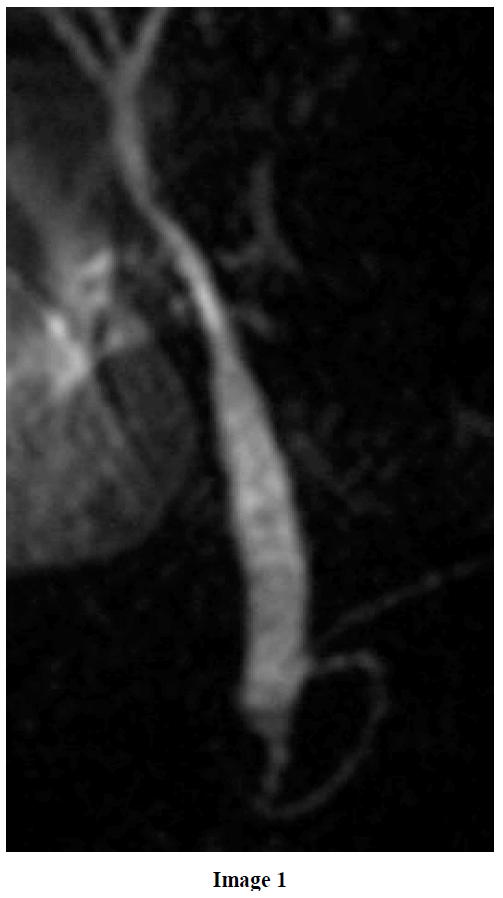- (2005) Volume 6, Issue 3
Makiko Ono, Terumi Kamisawa, Yuyang Tu, Naoto Egawa
Department of Internal Medicine, Tokyo Metropolitan Komagome Hospital, Tokyo, Japan
Received February 23rd, 2005 - Accepted March 1st, 2005
Cholangiopancreatography, Endoscopic Retrograde; Cholangiopancreatography, Magnetic Resonance; Diverticulum
A 63-year-old male was referred for jaundice and general fatigue. Computed tomography of the abdomen showed several gallbladder stones and gallbladder wall thickening. The laboratory data was the following: total bilirubin 2.2 mg/dL (reference range: 0.2-1.1 mg/dL), direct-bilirubin 0.6 mg/dL (reference range: 0-0.2 mg/dL), SGOT 46 IU/L (reference range: 12-32 IU/L), SGPT 79 IU/L (reference range: 7-43 IU/L), GGT 254 IU/L (reference range: 9-70 IU/L). After admission, coronal heavily T2-weighted single-shot rapid acquisition with relaxation enhancement magnetic resonance cholangiopancreatography (MRCP), carried out without secretin injection, demonstrated a lateral compression of the distal common bile duct (Image 1).On duodenoscopy, the major duodenal papilla with a normal orifice was located in the periampullary duodenal diverticulum (Image 2). Endoscopic retrograde cholangiopancreatography (ERCP) with injection of contrast material into the diverticulum revealed that the distal common bile duct was laterally compressed by the diverticulum (Image 3). There were no findings of bile duct stones or dilatation of the common bile duct. His symptoms and laboratory data improved quickly after admission. We diagnosed him as having Lemmel syndrome.



Lemmel advocated that periampullary duodenal diverticulum often compressed the distal common bile duct and prevented the secretion of the bile [1]. Several reports have demonstrated an association between periampullary duodenal diverticulum and gallstone disease [2, 3]. MRCP is a noninvasive imaging modality which is useful for examination of patients with obstructive jaundice. Although MRCP with secretin stimulation could demonstrate a periampullary duodenal diverticulum which was filled with secreted pancreatic juice [4], a routine MRCP without secretin injection has low sensitivity for the detection of a periampullary duodenal diverticulum [5]. Lateral compression of the distal common bile duct on MRCP without secretin injection implies the possibility of periampullary duodenal diverticulum.